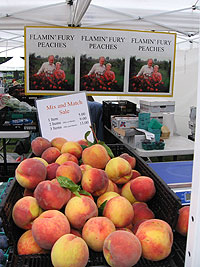|
|
 |
PAGE 43 / 87 |
 |
Unit 2: Marketing Opportunities and Strategies for Sustainable Farm/Ranch Businesses
 |
(Gigi DiGiacomo) |
With a break even price determined for each product, a farmer can move on to the next step in pricing: research to learn about their competitors, prevailing market prices and more details about consumer tastes and preferences. This information can help determine the pricing sweet spot (high enough to make a profit, but not so high that you discourage demand). Setting the price above the break-even price presents an opportunity for the farmer to evaluate:
-
the uniqueness of the product/service they are offering,
-
the characteristics of their potential customers,
-
how well they can compete in the market.
Based on the results of this assessment, a farmer or rancher will likely use one of two price setting strategies: cost-plus (break-even + fixed profit margin) or value pricing (break-even + whatever the market will bear for product and its intangible values). Some businesses may experiment with both strategies. |